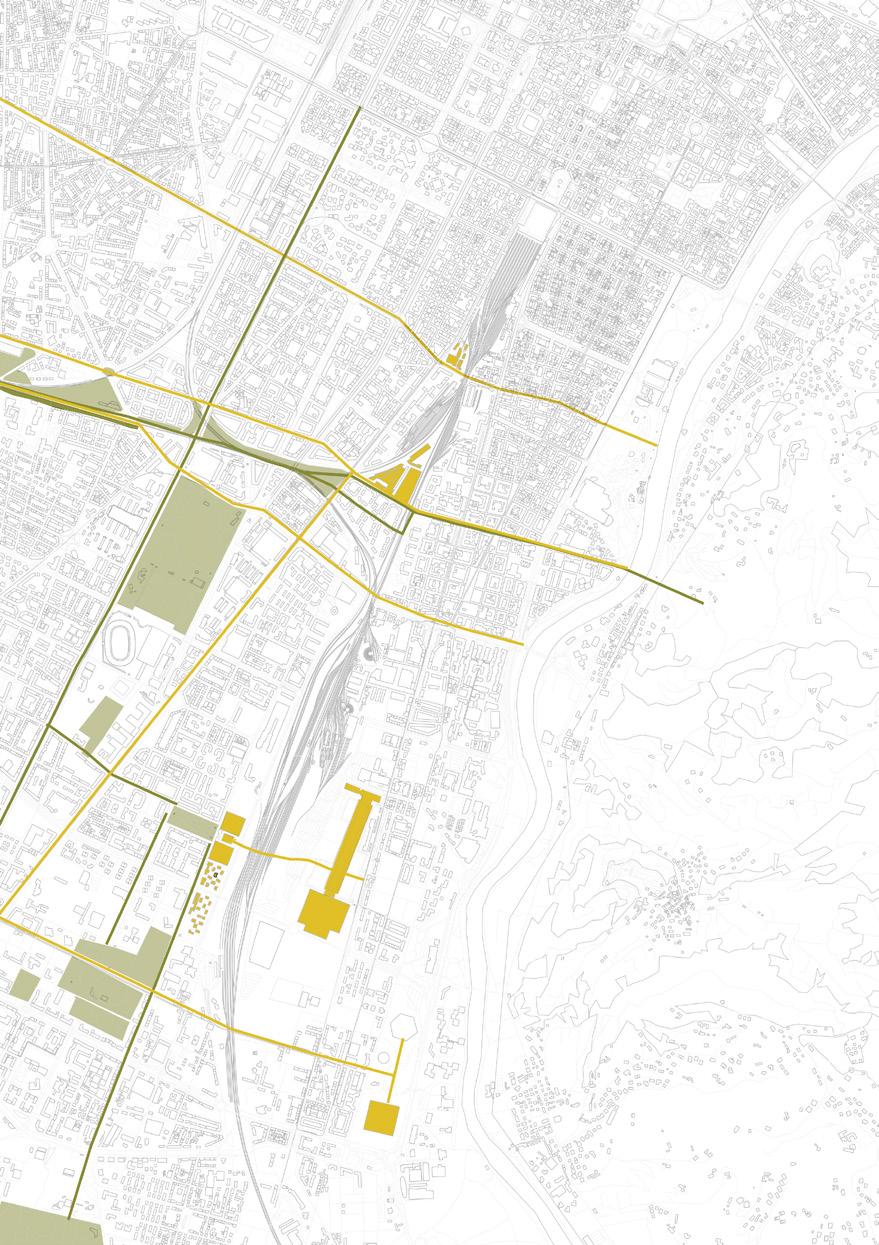L’ISOLA D’ARTE A TORINO
a placemaking project by Stanimira Getova
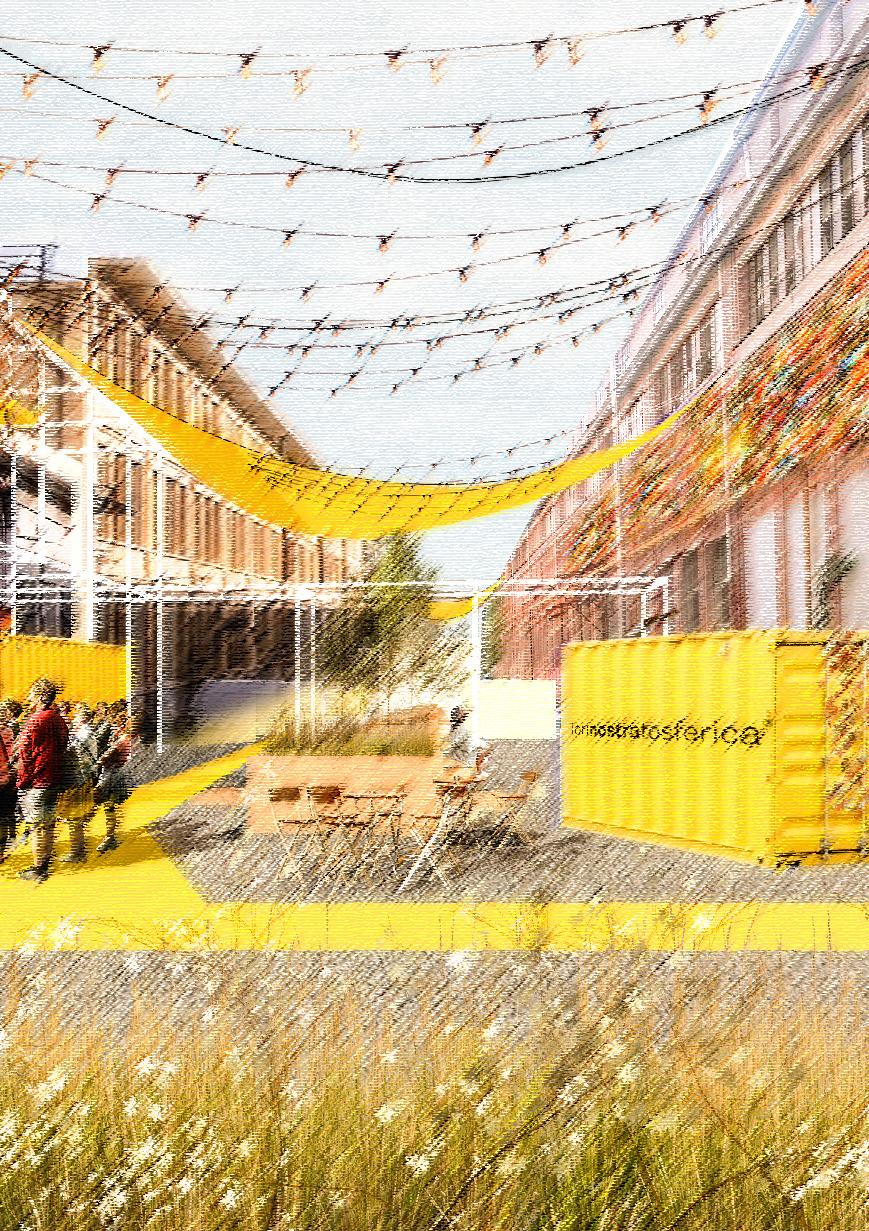
“Life in the city is a self-reinforcing process. Something happens because something happens because something happens. Once a children’s game gets going, it can quickly attract more participants.People come where people are.”
Gehl, J. Cities for the people
CONTENTS why am I? p. 4/5 introduction personal approach p. 6/9 media and locals p.10/11 4 instead of 14 photo inspirations p.12/21 observations city’s image as a collage p.22/25 social housing in times of industialisation p.26/27 the green line exploring broken connections p.28/29 project proposal the spaces in between p.30/37 vision for the future p.38/39
 Stanimira Getova
Stanimira Getova
who am I?
bulgarian architecture student in Sofia, Bulgaria, interested in creative and analytical writing, exploring different cultures, and how people co-live worldwid, how do cities shape our personalities, build characters, and what impact do we as human beings have on the city’s image and the cultural landscape.
I did one year Erasmus interxchange in the University of Genova. My exprience abroad let me catch a glimpse of the abundance of diverse treasures the world has to offer and inspired me to continue my exploration.
I travel around the world in search of an answer to the question:
what brings us together, and how could we make the hectic 21st century way of living a better experience.

introduction

Everything shapes our experience:
from the local bar on the corner where we have breakfast to being stuck into the morning traffic;
the restaurant just next to the office where we spend our lunch break, the tremendous distances that we overcome to reach the city center, the places and activities that we decide to engage with during our free time, the graffiti wall, the rubbish out of the bin, the empty playground, the Chinese shop; and therefore creates our image of the city.
What about building together a collective image, creating a community, and being part of it?
What about being actively engaged and shaping our urban experience through going beyond all borders- physical, mental, and social?
What about bridging the gap between areas, individuals, and ideas?
media and locals
I decided to explore also a bit on the web, though I know that the resources are not always that reliable and I was positively surprised to find out that there is this newspaper sequence of articles named:
Lettera dai quartieri di Torino, la città raccontata dai giornalisti di Repubblica.
So I read about the life and experience of the locals inhabiting the periphery. This research helped me understand more about the city and the nature of its problems but also develop faster a plan for the places that I wanted to explore.
Although it might haven’t been the best approach, as in this way, I headed for the places with a biased image of them. Though, I found unexpected things.

4 days a lot of photos
the order of the photos is absolutely intuitive and not following any timeline
biking the city
One of the things that fascinate me is the shared biking system we don’t have in Bulgaria.
As I had less time to explore, I decided to move around the city by bike, so I rented one for the month.

Unfortunately, soon I realized that the areas with the worst reputation - Barriera di Milano and Madonna di Campagna - are stated by the app as a no-parking zone.

I think that the city offers an enjoyable experience on a bike and can become a bike city.
I believe that it would be worth it if the bicycle network would be improved as some areas are rather dangerous and don’t provide enough space or put the cyclist at risk of getting their tire stuck in the tramlines.
Parco Pietro Paolo Mennea impressed my by its blues and the feeling that it provoked in me. I wished I could stop there for longer and do some jogging, play basketball with the random people there or just lay on the blue ground and enjoy the autumn sun.
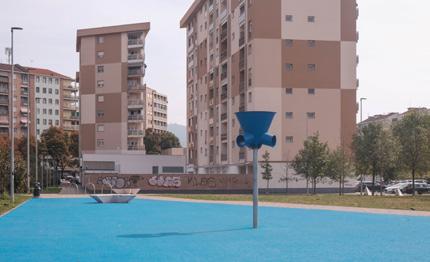
blue is a nice color
The place is located at Madonna di Campagna. The building is a work of a Bulgarian architect called Nikolay Diulgheroff of who I had never heard of before.
The ship-like building hosts a rooftop urban garden, children’s club, and casual events to liven up the neighborhood.
spot for creativity

I felt at home. I saw the Cyrillic alphabet and the slogan: love the difference. And I thought that it is a powerful metaphor given the fact that it was placed above the central Mercato.
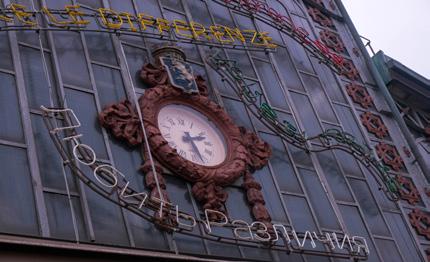
all cultures meet together
I loved the contrast of red and grey colors. The scene provoked the feeling of scale imbalance that I compared to the growing size of the cities and the little space that we need to meet and socialize.
It also reminded me of the concept of “grey Torino” and the image of people as giving soul to the in-between spaces.
at the corner

While biking in the San Salvario area I saw this man bringing the chair in the streets. I felt it somehow natural. It reminded me of all the routine things we all do, not depending on social status or nationality. Therefore we are all different but the same.
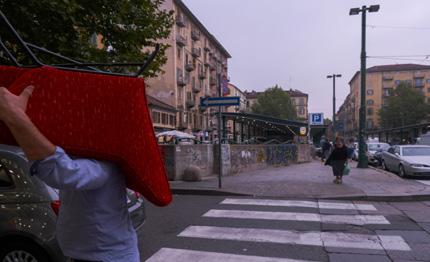
casual activities
Always fascinating place in the city is the informal market. It is one of the elements that bring people together and create this curious superposition of layers of culture, age, gender, occupation, everyday life but all united by one simple thing:
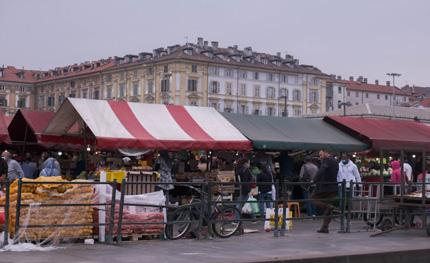
food.
city’s layers
On the first day of my exploration, I saw this abandoned market located quite near the office. Since then, I have observed the place, and I noticed various activities happening as children playing or elderly couples practicing tennis. I wonder why can’t it open its doors and allow new opportunities?
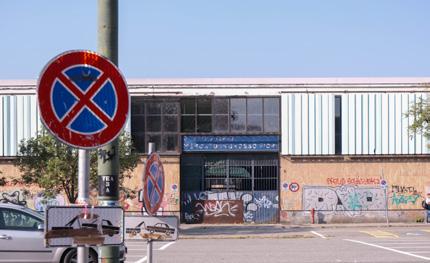
I found the design and the materiality of this market impressive, but unfortunately, the situation now is a little bit “out of order.”
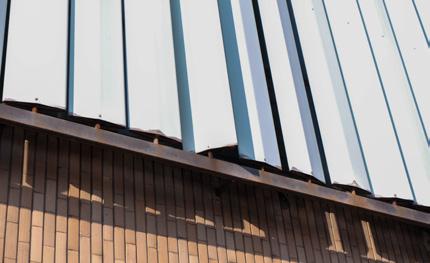
a spot for creativity out of order
I ended up in some interesting area that was oddly blue, and the citizens have turned this free space into car parking.
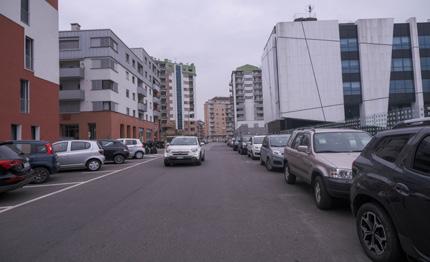
Another fascinating area for me, especially as a student, was the university area. I think that the idea of a “campus city” in the city is appealing, though, in my view, it was still missing enough attractive public spaces where students could actively engage, have fun, and make new connections which are as important as studying.
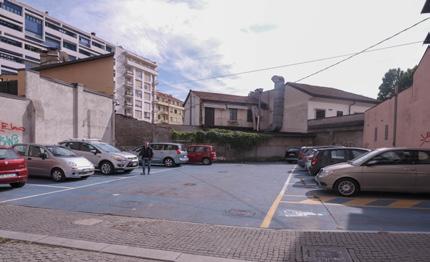
cathing blues student’s city
My last similar experience was in Napoli. I find it intriguing how many ways of living exist in one territory, and surprisingly sometimes they never come to intersect.
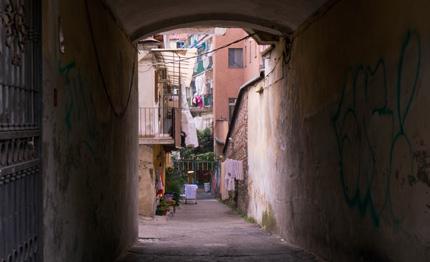
hidden existence
The PoliTo hotel impressed me by it’s game of volumes and compositions. I would spend a night in this hotel.
the power of composition

I read about this square in the newspaper. And indeed, the locals have organized this urban garden in the middle of the neighborhood. Though, somehow it failed to give me the feeling of a vivid urban space.

I was heartbroken by this view. I don’t know why this family was staying there, but I imagine that probably there are not that many places with a bench and a view nearby, as they chose this location.
the view is not important
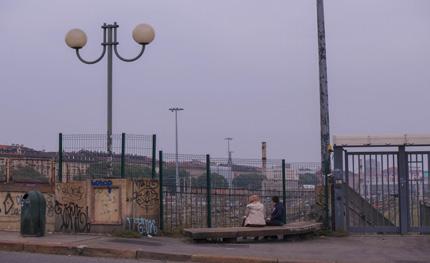
piazza
Madonna di Campagna hides treasures. I was surprised to find this appealing walkway which turned out to be extremely long and green.
the longest walk
During the last day of my more intense exploration, I went to Barriera di Milano. I found out this school is in the green area. It was full of young children going for the training of different sports and dances. The environment was lively and playful.
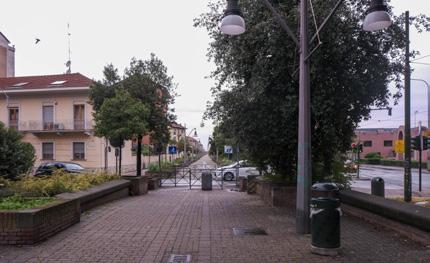
school in the nature
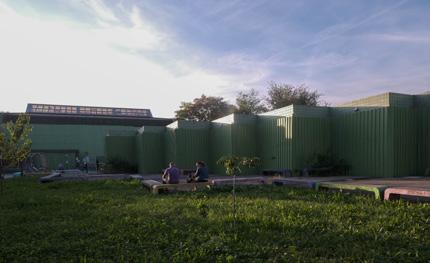
observations
city’s image as a collage
My experience turned out to be a bit intricate since one year ago I visited Turin for a day trip, but as a tourist, I had grasped just the ‘nice’ part of the city back then.
So when I started exploring the periphery and the different neighborhoods, the image that I had in my head made the contrast even more evident as now I was encountering the city not as the standard tourist but as a local. The overlapping of different realities in one location was interesting for me even before, but now I managed to experience it. It was astonishing for me to follow the process of constructing the new image of the city by somehow collaging the new layers on the already existing picture that I had in my head.
In addition, the concept of placemaking by implementing small interventions instead of a big modernist planning approach has fascinated me. I also related the idea to a book I had recently read, named the Collage city, corresponding to the same idea.


social housing in times of industialisation
Temporary housing to accommodate the burgeoning workforce.
Source: Fondazione Istituto Piemontese
Turin experienced an unprecedented period of concentrated economic, population, and physical growth from the beginning of the 20th century to the 1970s. Thus a lot of people needed a new home.
The industrial buildings were the new social and public space surrounded by dense residential neighborhoods.
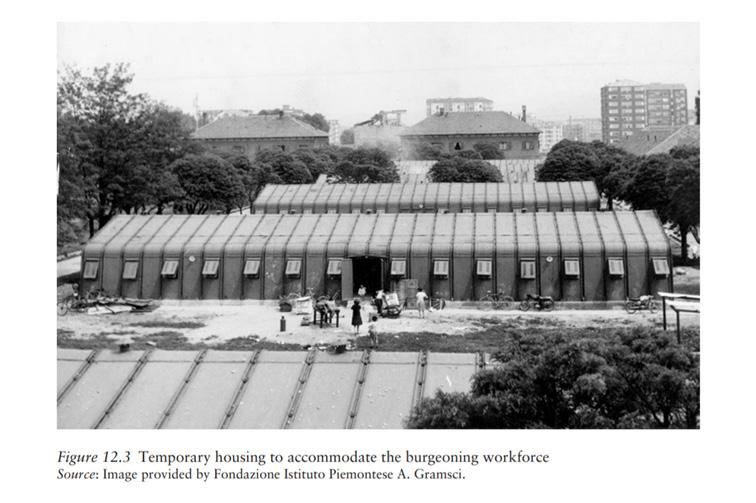
Now the industrial is left abounded. There is no public space anymore.
My critical reflection on the post-industrial situations suggests establishing a new urban layer of a network of vivid public zones in the space in-between the industrial remnants while transforming the buildings into new multifunctional cultural assemblies.
the green line exploring broken connections
The city possesses resources that could be part of an attractive and functional network of spaces. The green line pushes the city one step closer to become an outrageous place. ‘The line’ not only connects the west part of the city to the riverbank but bridges the two sides of the railway lines.
I purpose a future network consisted of series of green corridors and a secondary network of public spaces, organized along the railway lines and its adjacent zones and thus connecting the city instead of tearing it apart in a new engaging way.


L’ISOLA D’ARTE A TORINO
L’isola d’arte aims to fill these voids through storytelling and introducing new mixed functions. The creative district is part of a mapped network of abandoned industrial heritage sites that bring together the collective memory of the past century and gives life to it but in a different way. Once attractor points not only to the populace of Turin but also the whole country for their gigantic power in the industrial production context, now the fabrics transform into vibrant places of the new day.
The network is a superposition of different layers: of stories, memories, activities, green areas, public spaces, noticeable city elements and aims to connect the west part of the city to the east bridging the gap caused by the railway lines.
The industrial area is redeveloped into a cultural center with mixed-use. The rooftops are transformed into a spectacular and colorful playground with a garden which people could also use a shared workspace with a view.
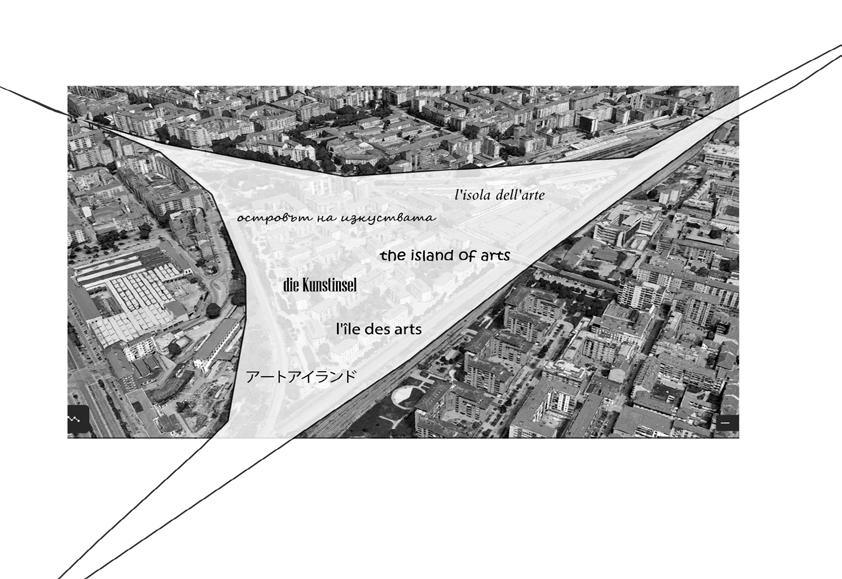

the spaces in between
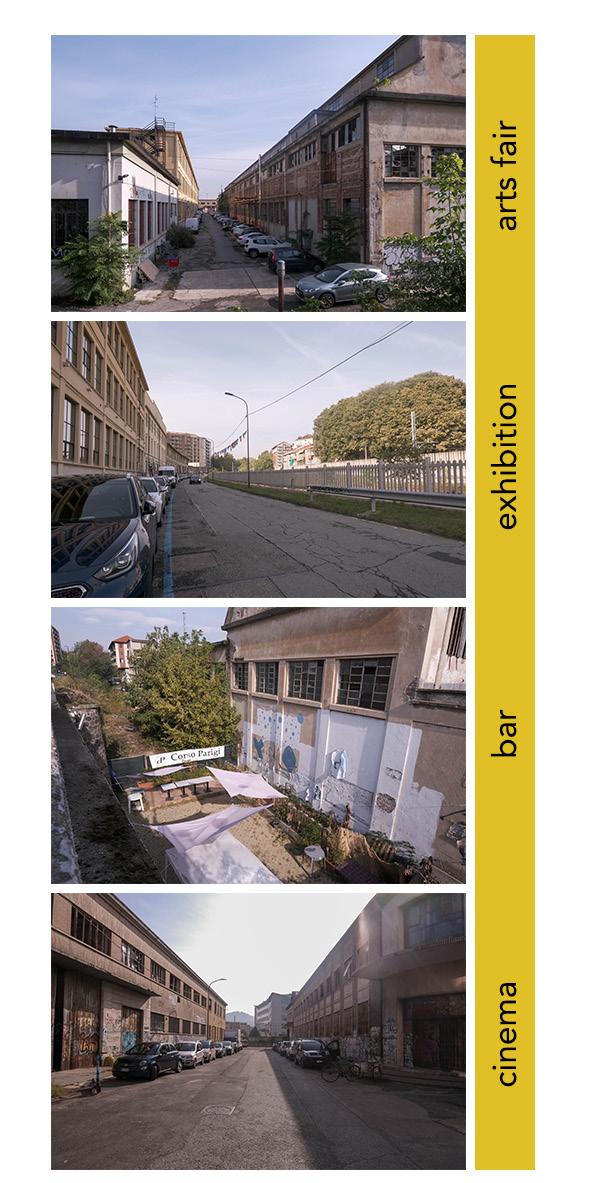

Through series of interventions into the linear spaces that have been formed by the volumes of the industrial buildings, the project purposes revitalization of the area by creating new active public spaces and establishing a creative district in the heart of the city.
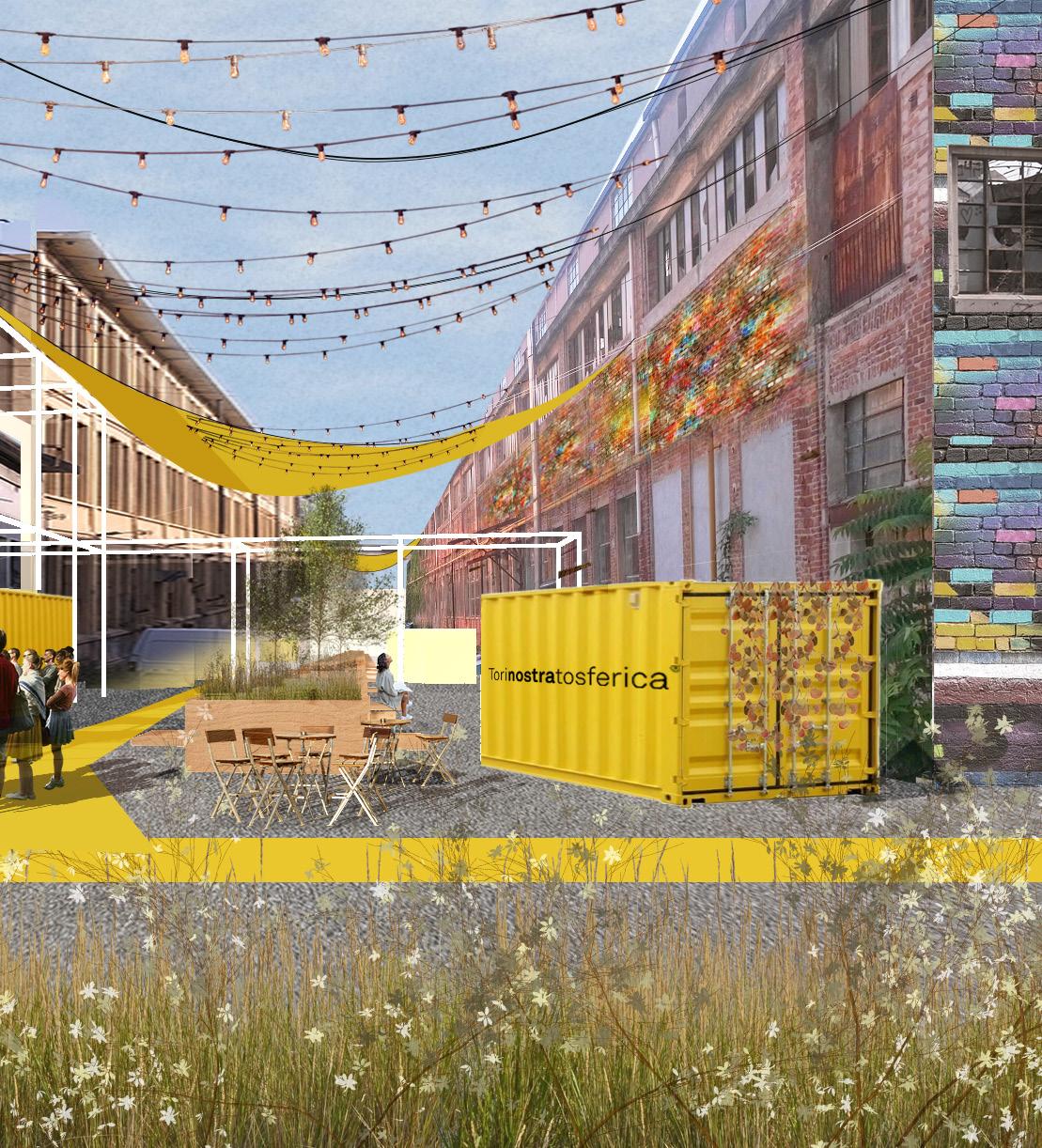
vision for the future
Carpark Playground - Project | ODS
rooftop playground
nspired by the danish Carpark Playground I imagine that the spacious industrial flat roof of one of the fabrics could be suitable for a playground. After I explored the city of Turin I concluded that the city needs more space for safe children’s games.
Citizens would be able to access the rooftop playground will be possible through the ‘urban platform’ that is a three-dimensional grid structure with lots of plants and areas organized so that locals could meet and enjoy their free time with a view of the Alps.
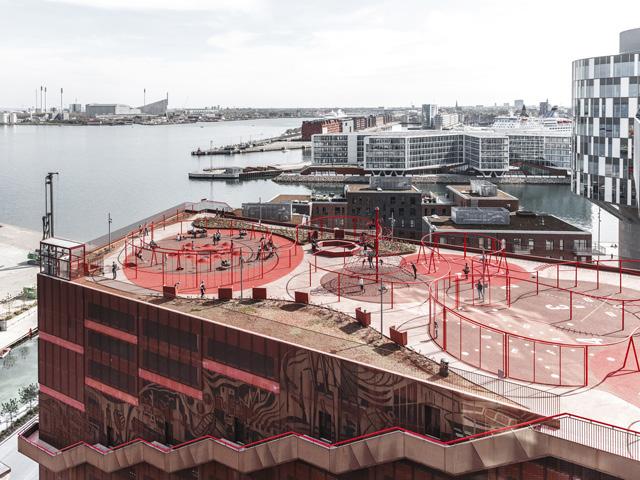
new experimental cinema

The city also has a part of its history full of mysticism - the hidden Egyptian influence and the obelisks in the streets. It is time for all the metaphysical to attain shape.
The creative district will house the new experimental cinema of Turin, and just in front of its door in the street will be an open-air space for projections.

THANK YOU

 Stanimira Getova
Stanimira Getova




























